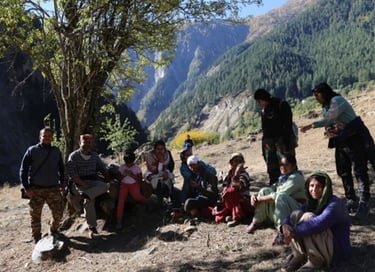02.02.24
Fostering Visibility: A Day in Shoar Village of Pangi, Himachal Pradesh


Pangi is one of the pilot regions of the BIPP-ISB’s Initiative of the Forest Economy (IoFE). IoFE team visited the Pangi valley in October 2021 to accelerate the operations on the ground and witness the existing challenges and exciting opportunities of the forests and communities. This photo essay is the sneak-peak into the daily life of Shoar village with details of the geography, communities, and seasonal forest products (SFPs).
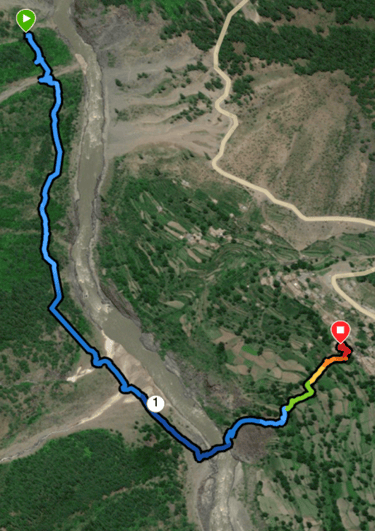

IoFE team hiked this trail in the Shoar Forest.
Pangi is a remote and picturesque region located in the state of Himachal Pradesh, India. Nestled in the heart of the Himalayas, Pangi is characterized by its rugged terrain, deep valleys, and towering snow-capped peaks. The region is surrounded by majestic mountains, including the ranges, creating a breathtaking backdrop. Lush green forests, comprising of coniferous and deciduous trees, cover the landscape.
The Chenab River, one of the major rivers in the region, flows through Pangi, carving deep gorges and providing a lifeline to the local communities. The river, along with its tributaries, adds to the scenic charm of the area, meandering through the valleys and enhancing the overall splendor of the landscape. The people of Pangi, mainly belonging to the Pangwala community, lead a simple and traditional way of life. IoFE team visited the Shoar village, one of the sixty villages of Pangi Valley which is near to Lahaul.
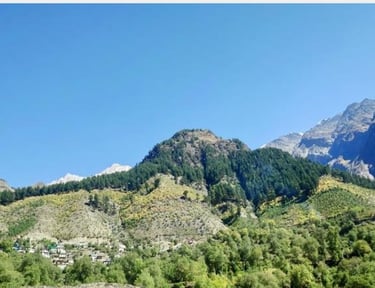

1. Geography
1(a) The scenic landscape of Shoar Village
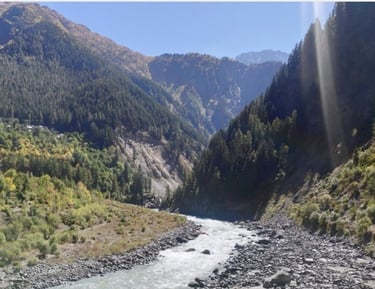

1(b) Chenab River in Shoar Village
Pangi is sparsely populated, with scattered settlements and villages. The main community residing in the area is the Pangwala tribe, known for their traditional way of life and close connection to the land.
The communities in Shoar collects various Seasonal Forest Products and one of the commonly collected SFPs is Hazelnuts under the leadership of Mahila Mandal, a group of women association who participate in decision-making and act as a representative of the community. This is formed by the Ministry of Women and Child Development.
People from Pangi are involved in agricultural farm as labours, harvesting forest produces, as a labour under Mahatma Gandhi National Rural Employment Guarantee Act, 2005 (MGNREGA) and some migrate to other nearby cities and states.
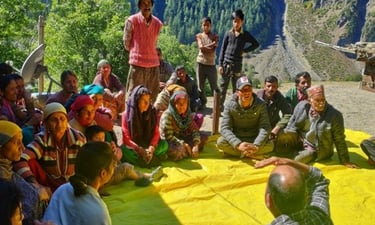

2. Communities and their Occupation
Figure 2.(a) ISB Team Interacting with the locals to understand fovernance of resource use in the forest
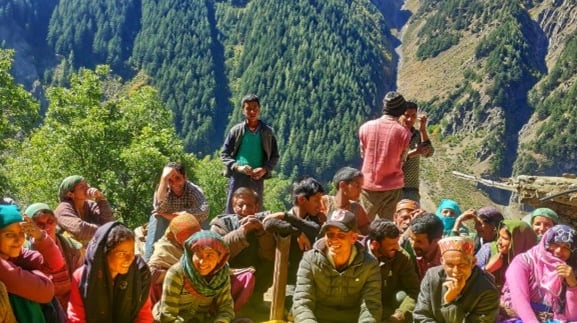

Figure 2(b) Focus Group Discussion with community people about the livelihood generation from forest produce. Mahila Mandals are briefing us about collection of forest products such as Hazelnuts and other medicinal plants.
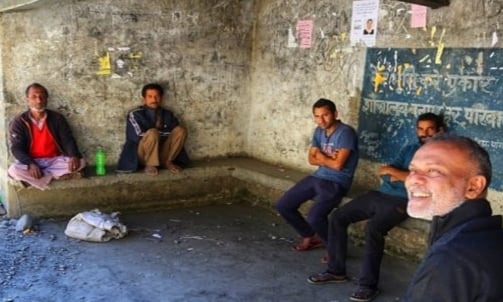

Figure 2(c) IoFE team member AVijit during the interaction with the locals.
The dense forests of Shoar have high value forest products such as Hazelnuts, Kala Jeera (Black Jeera), Gucchi (Morel mushrooms), Ban Lahsun, walnuts among other Seasonal Forest products (SFPs). The team members actively assisted a local woman in the process of threshing Rajmah, a crop that is cultivated by the community. Rajmah exhibits an incredible range of colors. Each year, approximately two sacks of Rajmah are cultivated, and they are carefully preserved for future use. The community stores are closed for the winter season, particularly during snowfall.
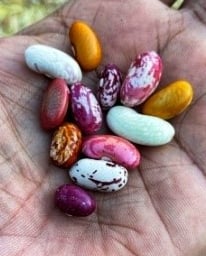

3.Seasonal Forest Products
3. Local rajma (Kidney beans) harvested by the commnities of Shoar village.
4.Mapping of Hazelnuts trees and Team Building Over Trekking
The team members started their journey to the Hazelnuts Forest accompanied by the youth of Shoar village. The trek walk worked as an excellent activity for team building and experiencing the lives of the communities.
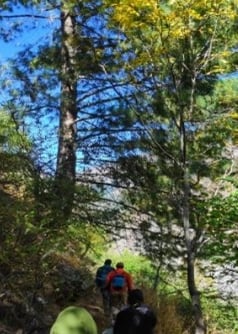

The IoFE team briefed the communities about mapping of the Hazelnuts trees.
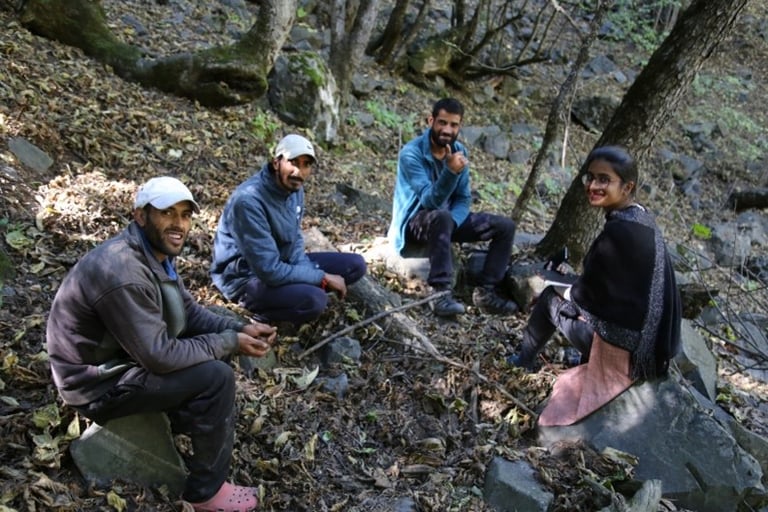

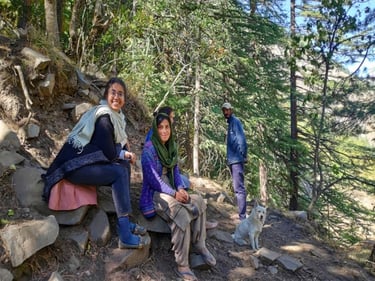

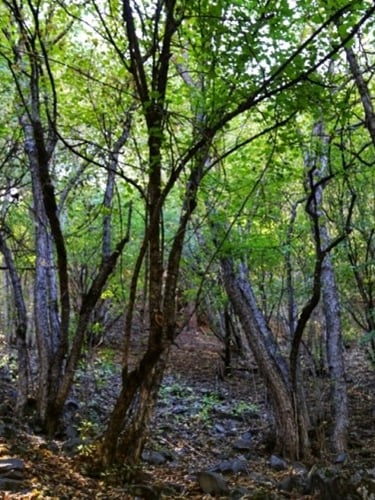

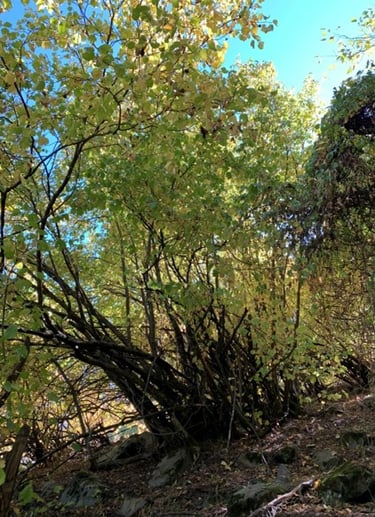

4(c) Hazelnut trees
During our interaction, the local woman proudly displayed samples of Hazelnuts collected from the enchanting Shoar forests. She and her child skillfully deshelled the Hazelnuts using stones, providing us with samples to present to potential industrial buyers.
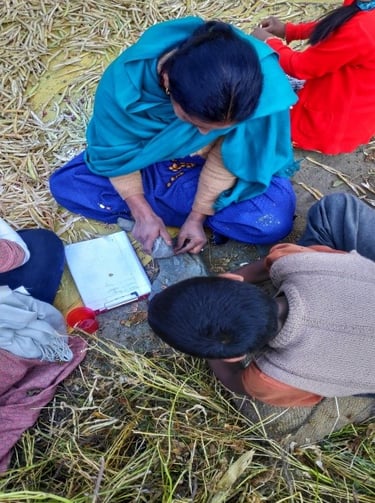

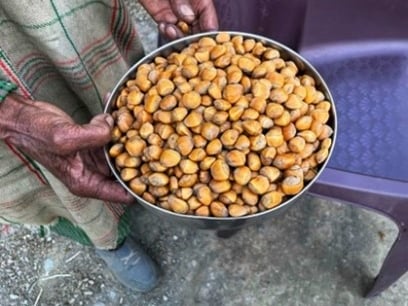

4(d) A local women offering Hazelnuts to team.
4(e) Women and child breaking Hazelnut shells with a stone.
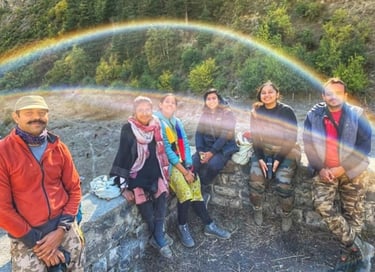

As the day drew to a close, we took a moment to reflect on the remarkable beauty of the Shoar forest and the warmth of the community. We engaged in a brainstorming session, passionately discussing and sharing the valuable knowledge we had gathered from the community members to plan our operations effectively.
